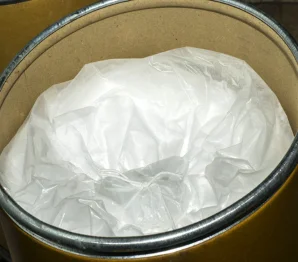- This topic is empty.
-
AuthorPosts
-
2025-08-20 at 6:36 pm #7342
Introduction
5-Aminolevulinic acid (CAS No.: 106-60-5 5-ALA) is a naturally occurring amino acid derivative widely recognized for its applications in medical diagnostics, agriculture, and biochemical research. In its pure form, 5-aminolevulinic acid powder is a high-purity, white crystalline material that serves as a precursor in the biosynthesis of porphyrins, including heme. Its unique properties make it a valuable compound in both industrial and scientific contexts. In this blog post, SACH, a high purity biosynthetic raw material manufacturing factory, will share the chemical properties and applications of 5-Aminolevulinic acid powder for sale.
Chemical Properties of 5-Aminolevulinic Acid Powder
* Chemical Name: 5-Aminolevulinic acid
* CAS No.: 106-60-5
* EINECS Number: 203-414-1
* Molecular Formula: C₅H₉NO₃
* Molecular Weight: 131.13 g/mol
* Appearance: White powder
* Standard Purity: 99% minimum
* Packaging: 25 kg/drum
* Minimum Order Quantity: 1 kg
Physical and Chemical Properties
* Melting Point: 118–119 °C
* Boiling Point: ~242.42 °C (estimated)
* Density: ~1.3121 g/cm³ (estimated)
* Refractive Index: ~1.4300 (estimated)
These precise parameters ensure reliable quality control in manufacturing, research, and industrial applications.

Biological Role and Mechanism of Action of 5-Aminolevulinic Acid Powder
5-ALA (CAS No.: 106-60-5) plays an essential role in the heme biosynthesis pathway. In living organisms, it acts as a precursor for the formation of porphobilinogen, which subsequently leads to the production of porphyrins and ultimately heme, an integral component of hemoglobin, cytochromes, and various enzymes.
In medical contexts, the mechanism of action is particularly notable in photodynamic diagnosis (PDD) and photodynamic therapy (PDT). When administered, 5-ALA is metabolized into protoporphyrin IX (PpIX), a photosensitizing agent that accumulates preferentially in abnormal or cancerous cells. Upon exposure to specific wavelengths of light, PpIX produces reactive oxygen species, enabling targeted destruction of malignant tissues.

Industrial and Research Applications of 5-Aminolevulinic Acid Powder
1. Medical Diagnostics and Therapy
In oncology, 5-ALA is used for fluorescence-guided surgery, especially in the resection of glioblastomas. Its selective accumulation in tumor cells helps surgeons distinguish between malignant and healthy tissue. It is also applied in the treatment of actinic keratosis and certain superficial skin cancers.
Key Benefits in Medical Use:
* High selectivity for abnormal cells
* Minimal systemic toxicity
* Enhanced surgical accuracy
* Potential for non-invasive cancer detection
2. Agricultural Applications
In agriculture, 5-aminolevulinic acid is valued as a plant growth regulator. By promoting chlorophyll production and enhancing photosynthetic efficiency, it helps improve crop yield, quality, and stress tolerance.
Advantages in Agriculture:
* Increases plant resistance to drought, cold, and salinity
* Enhances photosynthetic activity
* Reduces dependence on chemical pesticides by improving plant health
3. Biochemical Research
In laboratory research, 5-ALA (CAS No.: 106-60-5)is used to study heme metabolism, porphyria disorders, and cellular oxidative processes. Its role as a metabolic precursor makes it a versatile tool in both basic and applied sciences.
Research Applications Include:
* Investigating porphyrin-related diseases
* Developing new photodynamic therapeutic agents
* Studying metabolic pathways related to oxidative stress
Quality Standards and Production Control
To ensure the reliability of results and safety in applications, 5-aminolevulinic acid powder is produced following strict quality control protocols:
* Purity Assurance: Minimum 99% by high-performance liquid chromatography (HPLC)
* Low Impurity Content: Strict limits on heavy metals, residual solvents, and microbial contamination
* Batch Consistency: Uniform particle size and consistent physicochemical properties across production batches
Each production lot is accompanied by a certificate of analysis (COA) detailing compliance with international quality standards.
Handling, Storage, and Stability
5-ALA is sensitive to moisture and light, which can accelerate degradation. Proper handling ensures its stability and efficacy:
* Storage Conditions: Keep in a cool, dry, and dark environment (recommended 2–8 °C)
* Container: Store in tightly sealed 25 kg drums to prevent exposure to humidity
* Shelf Life: Typically stable for 24 months when stored under recommended conditions
* Handling Precautions: Use gloves, masks, and protective eyewear when working with the powder to avoid inhalation or direct contact
Safety and Regulatory Considerations
While 5-ALA is generally regarded as safe in controlled applications, its photosensitizing effect necessitates precautions:
* Avoid Direct Sunlight: During and after medical administration, patients should avoid strong light exposure to reduce the risk of skin photosensitivity reactions.
* Workplace Safety: Adequate ventilation and personal protective equipment (PPE) are essential during manufacturing and handling.
* Regulatory Status: In many countries, 5-ALA is regulated as a prescription pharmaceutical for clinical use and as a registered plant growth regulator in agriculture.
Conclusion
5-Aminolevulinic acid powder (CAS No. 106-60-5) is a versatile and high-value chemical with crucial roles in medicine, agriculture, and scientific research. Its unique ability to act as a metabolic precursor to porphyrins underlies its medical diagnostic and therapeutic capabilities, while its plant growth-regulating effects make it an important tool for sustainable agriculture.
By ensuring strict quality standards, careful handling, and adherence to regulatory requirements, 5-ALA can be safely and effectively utilized to advance human health, agricultural productivity, and scientific knowledge.
-
AuthorPosts
- You must be logged in to reply to this topic.
